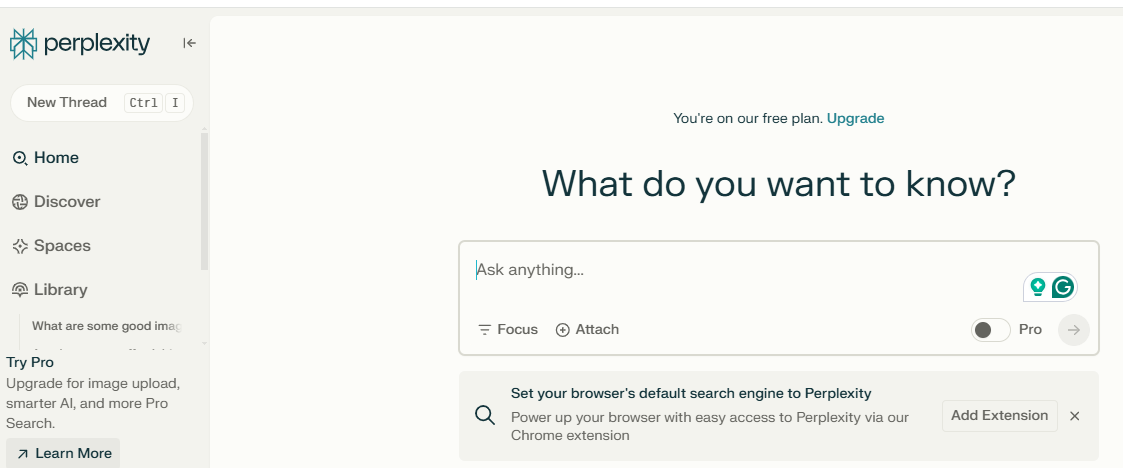In case you didn't know yet - Perplexity AI is awesome
This week, we put a Product Party lens to one of the fastest growing search engines.
We all have that one colleague or industry insider who can’t help but gush over their favorite new tool.
For me, it happened recently with
’s post, “Monthly FAQ - Nov 2024,” where he mentioned he couldn’t live without Perplexity AI.I’d been meaning to check it out, and that quick endorsement finally pushed me over the edge. After logging in for a few minutes, I wasn’t just intrigued - I pretty much fell “in like” with it because, you know… commitment issues.
If you’re in product management or just obsessed with tech trends, you’ve probably seen a constant stream of shiny new tools parade by, each claiming to be “the next big thing.”
The question is, how do you separate the hype from the truly transformative? That’s where Perplexity AI comes in as a case study.
It’s not just another AI-driven search engine - it’s a story of how a product can explode onto the scene, quickly gain traction, and teach us a thing or two about how to build and adopt remarkable solutions.
The Perplexity AI Phenomenon
Their background.
Launched in August 2022 by Aravind Srinivas and a team of AI heavyweights from UC Berkeley, OpenAI, and DeepMind, Perplexity AI rapidly carved out a name for itself. Breaking in an industry saturated with established players is no small feat.
Yet Perplexity managed it - fast.
Perplexity AI’s user growth metrics (MAU) are booming.
Q3 2023: 4.0 million
Q4 2023: 10.0 million
Q1 2024: 15.0 million
That’s a jaw-dropping 275% jump in monthly active users from Q3 2023 to Q1 2024.
This isn’t just a popular new tool; it’s a rocket ship.
The query volume is also exploding.
Total queries in 2023: 500 million
Average monthly queries in 2023: ~42 million
Average monthly queries in 2024: 250 million
Perplexity saw a 500% boost in monthly query volume from one year to the next - proof that once people taste the product’s value, they keep coming back for more.
Because of their growth, Perplexity AI is carving out a larger chunk of market share daily.
Even in a highly competitive space with big names we can’t get away from, Perplexity AI is on a crazy trajectory. As of now and based on what I found, the market share breakdown is:
ChatGPT: 61.3%
Microsoft Copilot: 15.6%
Google Gemini: 13.3%
Perplexity AI: 3.1%
Claude AI: 2.5%
Brave Leo AI: 1.4%
Others: 2.8%
Grabbing a 3.1% share in under two years is like vaulting into a sprint at full speed, not tripping.
What Makes Perplexity Special?
They have snappy speed and performance.
Single query response: ~1.2 seconds
Complex, multi-part query: ~2.5 seconds
Comparatively, traditional engines hover around 3.2 seconds, and other AI competitors hover around 2.8 seconds.)
This speed is not trivial. Seconds saved per query scale up to hours saved per month, especially for power users.
People are sticking around and engaging.
Perplexity AI’s average session duration is 9 minutes 4 seconds.
For context, this is about 16% longer than ChatGPT sessions. Users aren’t just dropping by; they’re hanging out.
Chill-axin’.
Compared to competitors, they have a few unique features that actually work well.
Real-time web access for all users
Transparent source attribution
Integration with WolframAlpha for computational muscle
These touches signal a product team that understands user needs: trust, speed, accuracy, and depth.
The Product Party Take
For those of us working in or around product, the Perplexity AI story is more than an interesting data point. It’s a gentle nudge - a reminder that it’s worth trying new tools, even if they’re not yet household names.
From a product management perspective, Perplexity AI’s rise offers lessons that can apply well beyond AI search:
Market Positioning: Instead of being “just another AI platform,” Perplexity carved its niche as a specialized research tool.
User-Centric Approach: By honing in on quick, accurate answers, Perplexity delivered on what users wanted most.
Cross-Platform Strategy: Capturing mobile markets in Asia and desktop-heavy markets in the U.S. reflects a savvy understanding of diverse user habits.
Rapid Iteration: Continuous improvement in user support metrics shows a clear commitment to refining the product in near-real time.
Valuation Growth: From $520M in Q4 2023 to a staggering $9B in Q3 2024, the company’s valuation underscores the economic potential of building what users actually need.
Maybe the next tool you test-drive will shave hours off your workflow, or maybe it will help you uncover new insights that shape your product strategy.
Ultimately, the underlying theme is this: Staying curious and open to what’s new can pay huge dividends. It’s not about the tool itself but the habit of exploration.
Our Final Thoughts
Don’t wait for someone to force your hand - be proactive. Dive into new tools like Perplexity AI, glean their insights, and apply the lessons learned.
In a fast-moving industry, a willingness to explore is a superpower.
Keep that curiosity alive, and who knows—maybe you, too, will fall into “almost love” with the next tool that crosses your path.
Until next week,
Thanks for reading! Don’t forget to like, comment, share, and subscribe if you haven’t. You can show your support by leaving a tip on my Buy Me a Coffee page.
PS: A little homework for the adventurous.
If you’re intrigued and want to embrace this mindset, here are a few simple steps to get you started:
Pinpoint Your Pain Points: Jot down some daily workflow irritations or professional hurdles.
Research Briefly: Spend five minutes poking around the web for apps or platforms that claim to address these exact issues.
Try Something New: If something looks promising - especially if it’s free - sign up for a test run. You can always bounce if it’s not a fit.
I’ve personally stumbled across countless gems this way - Perplexity is a prime example - and I can’t imagine my daily routine without them now.
Their impact goes beyond efficiency; they often bring joy, clarity, and sanity to my work life.







